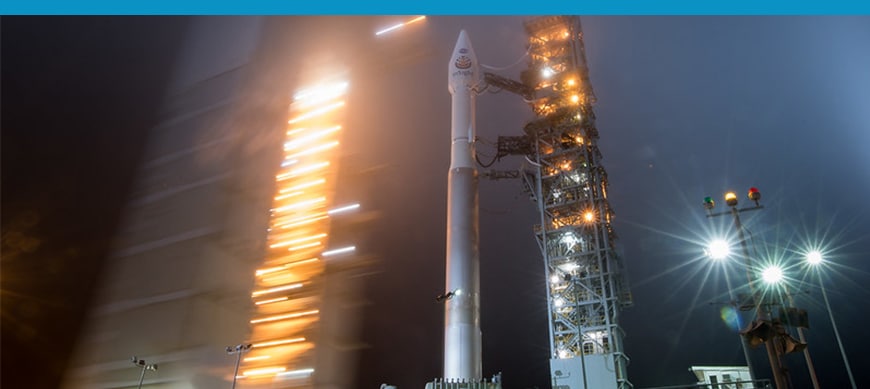Within the framework of Insight (Interior Exploration using Seismic Investigations, Geodesy and Heat Transport), a NASA Discovery Program mission that places a single geophysical lander on Mars, Coriolis µ has been used to monitor the air contamination before the launch.
To minimize biological risk, each Mars mission should satisfy a certain number of requirements and verify compliance with international obligations. A global program of tests is scheduled during all the phases of a mission before launch. To ensure the biological compliance of this lander to the Planetary Protection standards, several precautions were used, especially a sampling procedure before delivery during which Coriolis µ was used for environmental sampling to establish a bioburden baseline for the facility.
Insight successfully verified compliance with the bioburden requirements and has been launched on May 5, 2018.
Abstract of the sampling procedure:
For each sampling location, three replicate 5-min (1.5m3 air each) samples were collected at a rate of 0.3m3 /min in sterile cones provided by Bertin Technologies as well, containing 15mL of phosphate buffered saline solution. Collected samples were processed within 24 h of collection by using a NSAlike approach, except that they were not sonicated or heat shocked (NASA, 2010). The resulting CFUs were counted at 24, 48, and 72 h. This culture-based methodology detects both spore formers and non-spore formers. In addition to processing controls, positive and negative air samples were collected from the ISO 5 cleanroom bench air and external uncontrolled air, respectively. [Ryan Hendrickson, Gayane Kazarians, and James N. Benardini III. ASTROBIOLOGY – Volume 20, Number 12, 2020 – © Mary Ann Liebert, Inc. – DOI: 10.1089/ast.2019.2098]
>> Read the Research Article published on June 18, 2020
>> Contact our experts for more information about air sampling

